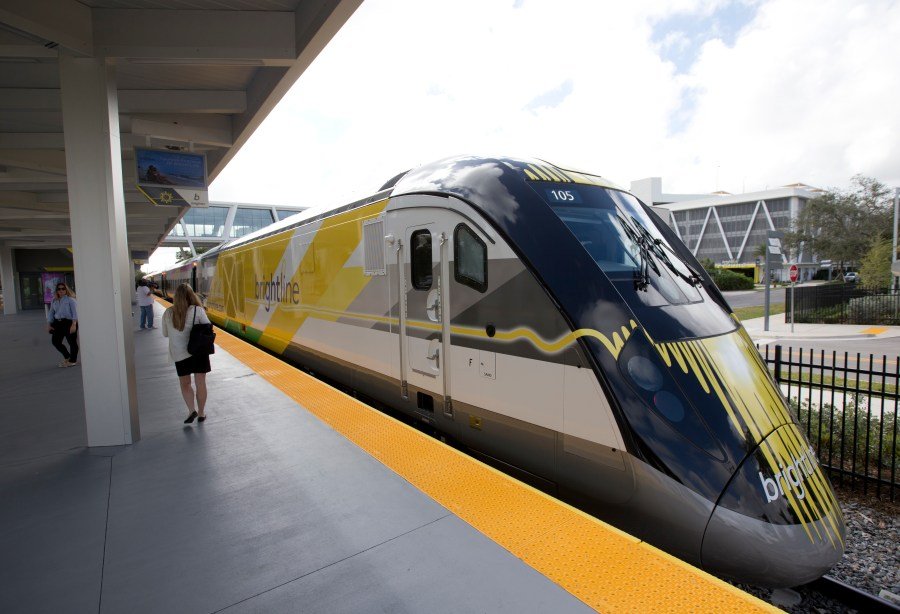
High-speed rail has captured the public imagination, becoming a key benchmark for comparison between China and the U.S.. Observers point to its widespread ubiquity in the former and absence in the latter as a reflection of broader developmental trajectories.
The Shanghai Maglev (short for “magnetic levitation”) train, with speeds of up to 268 mph, is one of many “super-trains” seemingly backing the claim that China is “living in the future” in 2025. However, the topic may turn out to be a case of comparing apples to oranges, due to structural differences in governance, geography and transportation culture.
Building a high-speed transportation network — a large-scale infrastructure project requiring massive federal investment — would pose a significant challenge to the U.S. economy. The California High-Speed Rail currently underway, for instance, was predicted to require $33 billion in funding but has now reached an estimate of $113 billion. Among the many repercussions soon to be realized, however, one stands out as particularly overlooked.
Such networks of high-speed rail would be disastrous to a part of America that has been driving the U.S. economy for many years, perhaps illustrated best in movies and television. Think of the Double R Diner from the show “Twin Peaks,” or the gas station stops in the Coen brothers’ film “No Country for Old Men.” Depicted in these scenes were “pass-through towns” or “rest-and-stop towns” — small communities between destination cities that stay alive because travelers stop at local diners, gas stations and similar mom-and-pop businesses.
Small towns and communities such as Seligman, Ariz.; Little America, Wyo.; and Needles, Calif., among others, have built their economies around providing such services. Unlike China, where there is a more concentrated settlement pattern, the U.S. has many such towns scattered across relatively remote areas, often encountered only during long drives. Implementing high-speed rail nationwide would be detrimental to these towns, in turn undermining key parts of the overall American economy.
Such large-scale infrastructure projects disrupt local autonomy and free-market activity. As has already been reported in China, high-speed rail networks often produce what is called the “siphon effect,” where the allure of large urban cities absorbs a great deal of investment and development opportunities away from smaller communities. This effect would be particularly damaging for small towns across the U.S. that have in recent years been in an economically fragile state. Many American social media influencers have disregarded this detail, and their pleas for the U.S. to join the hype have been echoed by policymakers and urban planners who have tried for many years to establish high-speed rail.
There is a fundamental conflict between the notion of connecting the whole of the U.S. with high-speed networks and the American tradition of decentralized infrastructure. The success of the Eisenhower Interstate System was not that it connected major cities but because it empowered Americans to traverse the entire country, aiding local economies along the way. The Eisenhower Interstate System also allowed Americans to live far away from city centers and helped cement America’s car culture. The vision for a high-speed rail within the U.S. imports the centralized planning of a nation with drastically different values and geography, fundamentally misunderstanding what has contributed to the historical success of the Eisenhower Interstate System.
Furthermore, the financial logic of high-speed rail networks simply does not hold up, as ongoing projects turned into what many city planners now describe as logistical and financial “nightmares.” Citizens Against Government Waste pointed to the mismanagement of California’s high-speed rail, which has faced rising costs every year since the project began. While the claim that it would cost $33 billion was never feasible, the current $113 billion estimate is already 23 percent higher than the $81.4 billion that organization had originally estimated it would actually cost. It cites the “opportunistic contractors” that have exploited the lack of foresight involved in the project, 88 of which were booted by Gov. Gavin Newsom far “too late.”
A misreading of the American public’s needs has led policymakers to surrender to hyped-up benchmarks that undermine the traditions and geography of the U.S., as well as reasons behind previous successes in infrastructure. Thus, it would be wise to think twice before entering the super-train craze that China has spearheaded, re-evaluating ongoing projects and reflecting on the longstanding national value of decentralization.
Rinzen Widjaja is a writer, political commentator and television guest speaker based in Melbourne, Australia, and a student of economics at the University of Melbourne.


